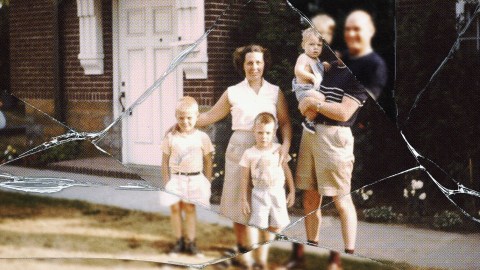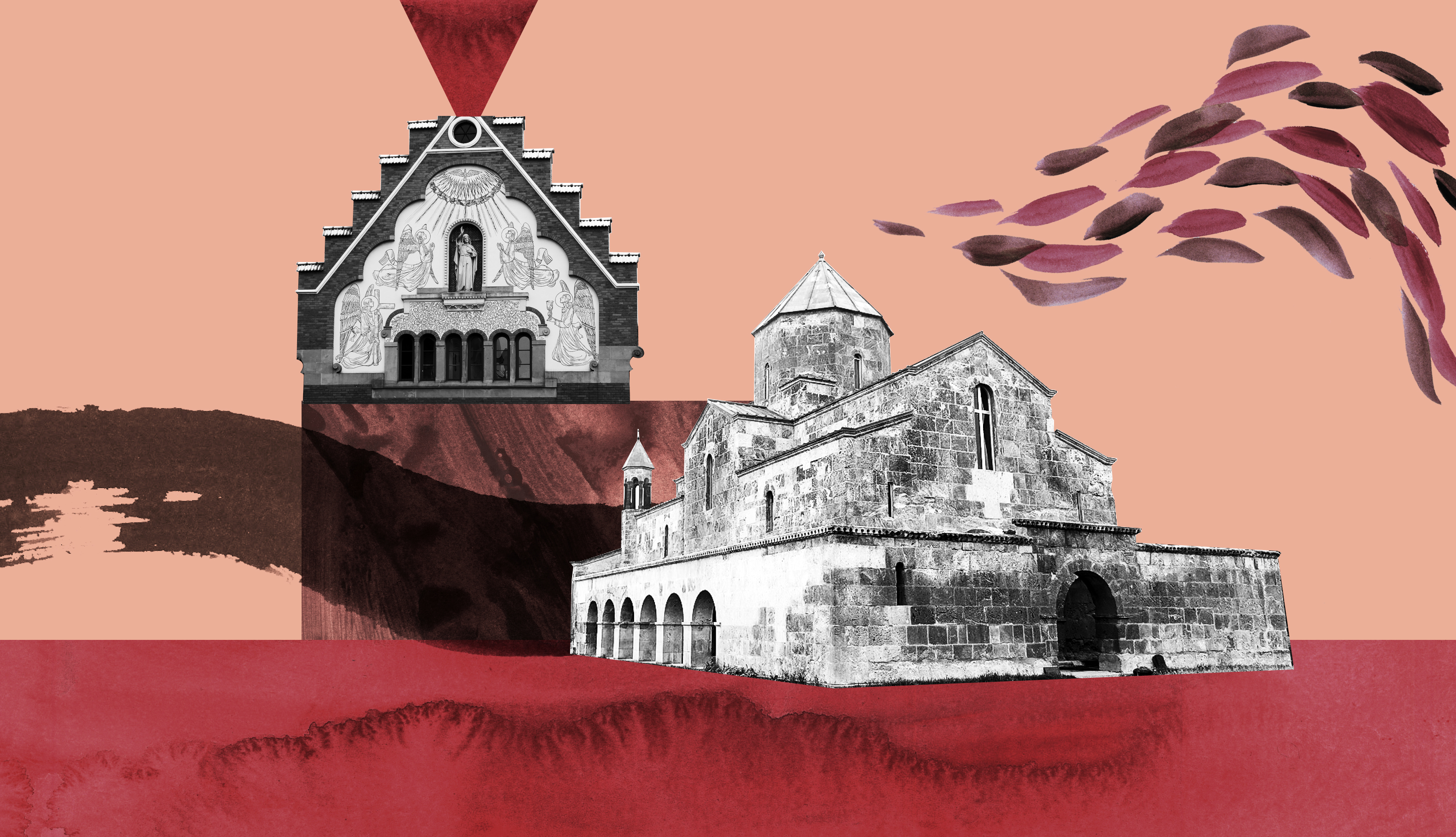Why we must replace the American nuclear family with a “postgenerational” society

- By the 1950s, the American “nuclear family” — two kids, working dad, mom at home, suburban prosperity — had become a global aspiration.
- We no longer live in a society in which traditional nuclear families are the majority.
- Living life one stage at a time and in sequence has become obsolete. We need to explore “postgenerational” ways of living.
The 1970s were the heyday of the nuclear family.
In theory, the sequential model of life, with people entering and exiting stages in an orderly and predictable way, became widely adopted around the world at the same time that governments, the media, Hollywood, and the major religions promoted the idea of the nuclear family, consisting of parents raising their children until they finished their education and left the household to start their own families. At the lowest socioeconomic levels, both parents would work, leaving children with neighbors or bringing them with their older siblings. In a development dating back to German unification in the 1870s, women higher up in the social hierarchy were told to stay home and devote themselves to the three k’s of Kinder, Küche, Kirche — children, kitchen, and church. Companies in most countries, from Japan all the way to the U.S., discouraged or outright prevented married women from working outside the household. By the 1950s, the American nuclear family consisting of two parents, at least two kids, a TV, a washing machine, a car, and a dog had become the standard to emulate around the world, given the growing prosperity of the middle class.
The rosy notion of the nuclear family belies a reality of struggle and despair. Its emphasis on “growing up” leads to the enormous pressures placed on children to prepare for achieving as adults everything from a stable romantic relationship to professional success. Moreover, the nuclear family has contributed to social inequality because, predictably, not every group in society is in a position to live up to the ideal prototype. “We’ve made life freer for individuals and more unstable for families. We’ve made life better for adults but worse for children,” argues New York Times columnist David Brooks in a recent Atlantic piece. “We’ve moved from big, interconnected, and extended families, which helped protect the most vulnerable people in society from the shocks of life, to smaller, detached nuclear families (a married couple and their children), which give the most privileged people in society room to maximize their talents and expand their options,” and ultimately “liberates the rich and ravages the working-class and the poor.” He is referring to the painful fact that the ideal of the nuclear family is far from realized among the poor and underrepresented racial and ethnic minorities.
Besides cultural shifts in our views about relationships and marriage, the reality is that we no longer live in a society in which life is perfectly sequential and traditional nuclear families are the majority. In both rich and poor countries, households headed by a single parent are on the increase, due to parents separating, divorcing, or never living together.
A 1957 survey revealed that more than one in two Americans felt unmarried people were “sick,” “immoral,” or “neurotic.”
A crucial aspect underlying the nuclear family is the idea that children need to grow up, work, and start their own nuclear family in due course. A 1957 survey quoted by Brooks revealed that more than one in two Americans felt unmarried people were “sick,” “immoral,” or “neurotic.” Traditionally, people who do not make it through the prescribed sequential stages of life at the right age risk being labeled as deviants or outcasts. But nowadays, traditional nuclear families are no longer the norm.
Another aspect of the nuclear family is the impact it’s had on social isolation. In the 1985 bestseller Habits of the Heart, a team of top American sociologists, led by Robert Bellah, wrote that “American cultural traditions define personality, achievement, and the purpose of human life in ways that leave the individual suspended in glorious, but terrifying, isolation.” Making progress in life consists of “finding oneself,” “leaving home,” “mak[ing] something of yourself ” through work, “love and marriage,” and “getting involved” in the community and the nation as a neighbor and citizen. But as political scientist Robert Putnam argued in his equally enthralling 2000 hit, Bowling Alone, American individualism has triumphed over the traditional sense of community, especially as middle-class families moved into the suburbs and severed traditional ties. “Something important happened to social bonds and civic engagement in America over the last third of the twentieth century,” he observed. “We are still more civically engaged than citizens in many other countries, but compared with our own recent past, we are less connected.” Among the many culprits (obsession with work, urban sprawl, generational change), he notes that “the downturn in civic engagement coincided with the breakdown of the traditional family unit — mom, dad, and the kids.”
By the turn of the twenty-first century, The Brady Bunch felt like a galaxial glow from a distant past, making it readily apparent that the sequential model of life, with its strict ordering and timing, had run its course. Living life one stage at a time and in sequence has become obsolete in the wake of women’s new economic and social roles, technological change, cultural globalization, the swelling tide of individualism, rising economic inequality, unconventional living arrangements, and the revolution in non-gendered identities. The nuclear family is no longer the norm in the more developed countries, and it may never become the norm in the emerging and developing world.
In a truly postgenerational society, more resources should be available to level the playing field for children who could not enjoy the emotional and economic support that belonging to a nuclear family can provide. But most importantly, those benefits should be made available at any age, not just upon graduating from high school, if we want to achieve equality of opportunity.
The way in which we have used age to organize and time careers and promotions reflects a patriarchal bias, which is deeply embedded in the sequential model of life and the concept of the nuclear family.
By the turn of the twenty-first century, The Brady Bunch felt like a galaxial glow from a distant past.
At a time when the traditional concept of the nuclear family is no longer the norm, reactionary points of view might propose a return to archaic values and practices — including relegating women to traditional roles — something that is not just unworkable but also unacceptable to many groups in society. We must move forward while avoiding a backlash or exacerbating social and political fissures.
So let’s be pragmatic. Let’s minimize social strife and political extremism by thinking strategically about both incremental and radical change. Let’s continue to discover the ways in which the sequential model of life is preventing people from realizing their full potential. Let’s challenge the assumptions that are causing the most trouble, especially those about the compartmentalization of the stages of life. Let’s launch pilot programs based on new ideas and possibilities both to prevent people from falling behind and to unleash each individual’s potential in this age of demographic, economic, and technological transformations. Let’s invite governments, companies, educational institutions, and other types of organizations to think about citizens, students, and workers as “perennials,” to be creative, to think outside the box, to become engines of change, to dissolve problems rather than simply solving them. Just a few of them can make a huge difference by experimenting with various aspects of postgenerational ways of living, learning, working, and consuming.





